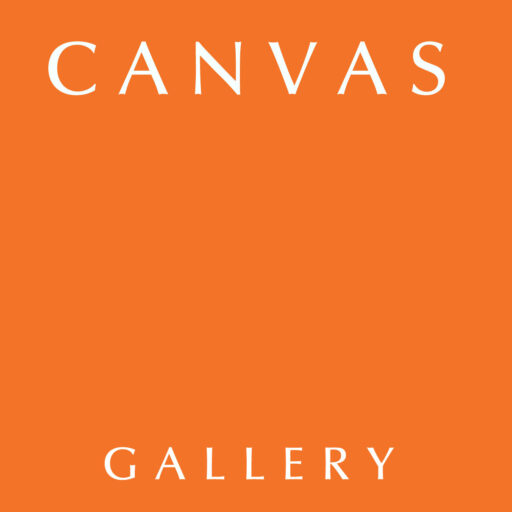Art with Urdu calligraphy – The Hindu
Pakistani artist Muzzumil Ruheel works with Urdu calligraphy to bring form to fictitious conversation
What happens in the pause between conversations? The slow loss of words, or the lack thereof. Brewing, holding back, or giving in. These are all thoughts that have fascinated Lahore-born, Karachi based, multimedia artist Muzzumil Ruheel. In his first solo show at Tarq, the artist dabbles with Urdu calligraphy, following an idea — “in the midst of my contemplation, [I] chanced to meet with conversation.”
Language as a muse
In the show titled, Baaton se Baat Nikalti hai, the artist personifies conversation, making her the muse in two and three-dimensional forms. Using sheets of wasli (a type of paper traditionally used by miniature painters in Pakistan), woodcarvings, and numerous Urdu words, Ruheel brings forth a tête-à-tête within the exhibition walls. Framed pieces bouncing off one another’s presence to create aspects of a conversation — both good and bad. The concept is an extension of three-person show he was a part of in 2016, which revolved around the notion of “text” in general. Titled, In Letter and Spirit, the exhibition inspired a larger narrative, one that took Ruheel a year to complete.
In his note accompanying the show, Ruheel writes, “If a poet uses me, I am poetry… if I am in holy scripture, I am a commandment. If a common man uses me, I am just common.” The words are used to describe how the alphabet is a mere middlemen, unearthing something more abstract like emotions, feelings, situations, joy, or grievances. Since the artist is fond of reading and writing fiction, his work is often a metamorphosis of those thoughts. As the artist elaborates, “I have been talking to a lot of non-existent entities, [and] this entity’s dinner had been long overdue.”
Mapping words
On one of the first walls of the exhibition, blocks dodge one another in a large frame. Using different directions, and patterns, Ruheel creates a tetris map of sorts. The work is titled ‘i said this and she said that,’ and plays on the misunderstandings between two people, a gap that exists due to colliding thoughts. As your eyes move across to the nearest wall, a black Perspex carving hangs, attached to a bright red dog leash. The words please kissi ko nahi
batana are written in Urdu, and doubled in a mirror image. As Ruheel explains, “every time someone tells me a secret and then askes me not to tell anyone; it feels like someone has leashed me and bound me with a promise.”
In the middle of the floor, stands a sculpted form of the word, “mein,” built as though it’s being pulled upwards unwillingly. Exuding a sense of pain, the structure personifies conversation as the “mein,” being twisted by words. As writer Gemma Sharpe puts it in the essay accompanying the show, “One might say in an argument. You are twisting me.” Something we often face in our everyday, Chinese whispers in the real world.
In a lighter piece titled ‘small talk,” the artist draws a literal golden line, insinuating the golden opportunities that await if you stretch the small talk far enough. Since Ruheel has created all the works imagining ‘conversation’ as a woman, I ask if she has a face. To which Ruheel responds with, “She is a beautiful ethereal creature. Wise beyond her looks and a refreshing intellectual.”
Imaginary narratives
The artist’s use of calligraphy has a sense of mystery. While we may not necessarily be able to read the text, the form and titles of the works is self explanatory, but do leave room for one’s own experiences with conversation. Ruheel has been trained in the artform for a span of seven years by calligraphy ustaad, Khurshid Gohar Qalam, followed by two years at the Naqsh School of Arts in Lahore. Through the show, he experiments with the Persian nastaliq script that was developed in the thirteenth century predominantly for literary writing. As Sharpe points out “[The words] are closer to confessional love poems on the back of Karachi rickshaws, TV news tickers, and ₹100 paperback novels.” Ruheel gathers these from a range of overheard conversations, popular culture, literature, and myth.
One piece that plays on literary works, a paragraph of legible writing has been dismantled and strewn in a line across the floor. Titled ‘aqal ki baat,’ the letters taunt the viewer with an air of secrecy. Are we supposed to attempt making our own narrative, or imagine an already existing one? Across the wall from the scattered words, tower three large frames holding Ruheel’s favourite work. Named ‘pause,’ the artwork on wasli took the artist eight months to complete.
Pausing time
While standing at a distance, the triptych looks like it holds three large grey patches. But when seen closely, each of the sheets are made up of words written in black ink, meaning that the ‘pause,’ behaves like a breather. It can mean everything, and nothing. For Ruheel, the piece is closest to him because it took the longest to make, and still talks about a brief moment. “I think that resonates with the entire scenario of life. For us life might be a long journey, but for time, it is just an objective amount of minutes,” he says.
Through the show, Ruheel uses the alphabet to act beyond words. He makes letters malleable introducing a sense of tangibility to all forms of communication. Ranging from situational, to hypothetical scenarios, Ruheel immerses the viewer in a conversation with conversation. Proving in this case, that words, are truly enough.
Baaton se Baat Nikalti hai is currently ongoing at Tarq, Colaba, until January 1o
Source: The Hindu

